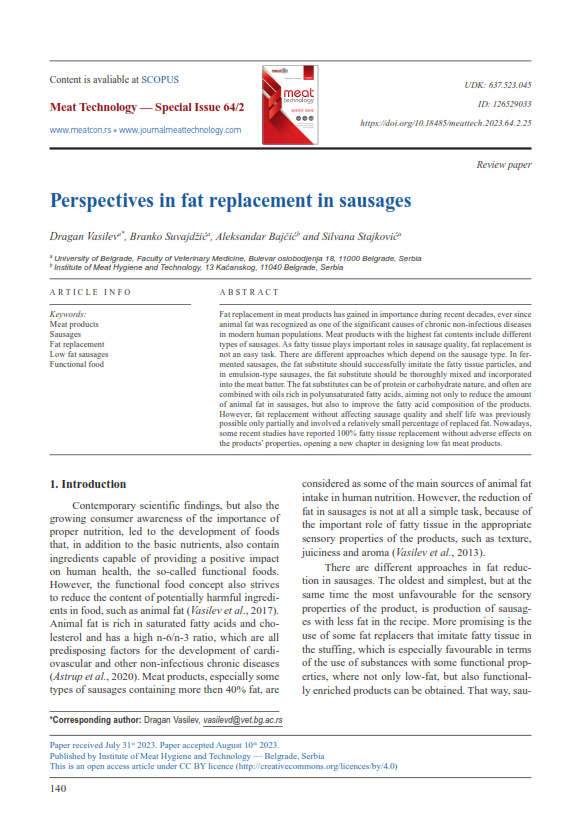Perspectives in fat replacement in sausages
Abstract
Fat replacement in meat products has gained in importance during recent decades, ever since animal fat was recognized as one of the significant causes of chronic non-infectious diseases in modern human populations. Meat products with the highest fat contents include different types of sausages. As fatty tissue plays important roles in sausage quality, fat replacement is not an easy task. There are different approaches which depend on the sausage type. In fermented sausages, the fat substitute should successfully imitate the fatty tissue particles, and in emulsion-type sausages, the fat substitute should be thoroughly mixed and incorporated into the meat batter. The fat substitutes can be of protein or carbohydrate nature, and often are combined with oils rich in polyunsaturated fatty acids, aiming not only to reduce the amount of animal fat in sausages, but also to improve the fatty acid composition of the products. However, fat replacement without affecting sausage quality and shelf life was previously possible only partially and involved a relatively small percentage of replaced fat. Nowadays, some recent studies have reported 100% fatty tissue replacement without adverse effects on the products’ properties, opening a new chapter in designing low fat meat products.





